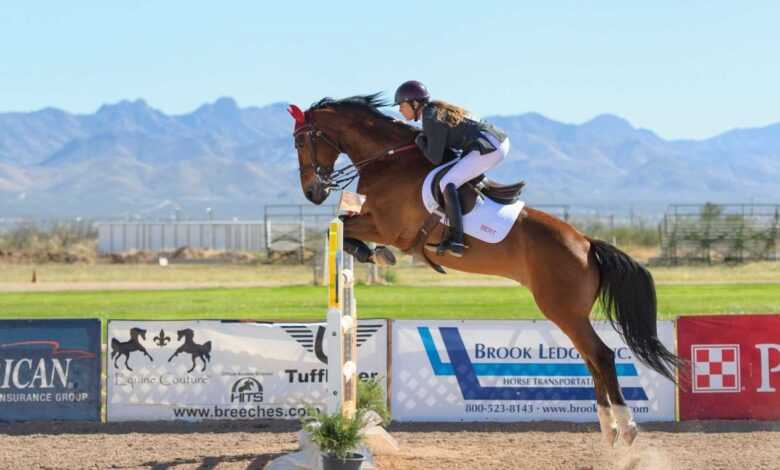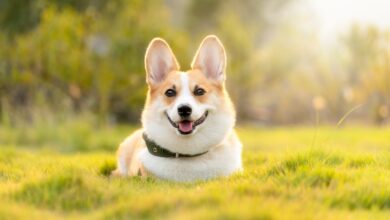
Horse Jumping Training
A. Importance of Systematic Approach
Mastering horse jumping begins with a structured approach. Establish the significance of step-by-step progression and the development of a solid foundation. Emphasize the impact of a systematic training regimen in ensuring a successful and fulfilling jumping experience for both the horse and the rider.
B. Role of Equipment and Experienced Trainers
Underline the critical role of suitable equipment in fostering a safe and conducive training environment. Discuss the influence of experienced trainers in providing invaluable guidance, support, and expertise during the horse jumping training process. Highlight the importance of their mentorship in building the necessary skills and confidence in both the horse and the rider.
Essential Steps for Horse Jumping Training for Beginners
A. Building Trust and Communication
Forge a strong bond between the rider and the horse by highlighting the importance of trust and effective communication. Provide practical strategies for establishing mutual understanding and trust, essential for a successful and harmonious training journey.
B. Basics of Jumping Techniques
Lay the groundwork for horse jumping by introducing fundamental techniques such as pole jumping and cross rail exercises. Offer comprehensive guidance on the proper execution of these techniques and their significance in building a strong jumping foundation for beginners.
Selecting the Right Jumps and Equipment
A. Guiding Jump Selection for Progressive Learning
Navigate the process of selecting appropriate jumps tailored to the horse’s current training stage. Stress the importance of aligning the difficulty of the jumps with the horse’s skill level to facilitate continuous growth and development throughout the training process.
B. Insight into Essential Training Equipment
Provide a detailed overview of essential horse jumping training equipment, including saddles, bridles, protective gear, and training aids. Explain the role of each piece of equipment in ensuring the comfort, safety, and optimal performance of both the horse and the rider during the training sessions.
Advanced Techniques for Training Experienced Horses
A. Refining Jumping Techniques
Elevate the horse’s jumping capabilities by delving into advanced techniques for refining jumping skills. Offer guidance on gradually increasing the height and complexity of the obstacles to challenge the horse and enhance its jumping prowess.
B. Specialized Exercises for Enhanced Abilities
Introduce specialized exercises designed to expand the horse’s jumping repertoire and abilities. Discuss the incorporation of challenging routines and techniques aimed at pushing the horse’s limits and improving its agility, strength, and precision in navigating various jumping obstacles.
Overcoming Common Challenges in Horse Jumping Training
A. Preventing and Managing Common Issues
Proactively address common challenges that may arise during horse jumping training, including refusal, run-outs, and nervousness. Provide effective strategies and practical solutions for preventing and managing these issues to ensure a smooth and productive training experience.
B. Building Confidence and Trust
Foster a positive and encouraging training environment by focusing on building the horse’s confidence and trust. Emphasize the impact of a supportive atmosphere on the horse’s performance and well-being, essential for a successful and enjoyable horse jumping training journey.
Horse Jumping Training Programs and Facilities
A. Exploring Reputable Training Programs
Dive into an exploration of reputable horse jumping training programs, highlighting their unique features, specialized offerings, and the benefits they provide to both the horse and the rider. Discuss the importance of selecting a program that aligns with the horse’s skill level and training goals to maximize the training experience.
B. Importance of Comprehensive Training Facilities
Stress the significance of comprehensive and well-equipped training facilities in providing an optimal learning environment for effective horse jumping training. Discuss the role of these facilities in offering a conducive space for both practical training and theoretical learning, contributing to the overall growth and development of the horse and the rider.
Show Preparation and Performance Enhancement Techniques
A. Mental Preparation for Jumping Shows
Prepare horses and riders for the challenges of competitive jumping shows by focusing on mental preparedness and resilience. Provide insights into effective techniques for managing pre-show jitters, enhancing focus, and building confidence to ensure a successful and confident performance during jumping shows.
B. Physical Conditioning for Optimal Performance
Highlight the importance of physical conditioning in preparing the horse for a successful performance. Discuss effective training methods and conditioning exercises aimed at improving the horse’s strength, endurance, and agility, essential for achieving peak performance and optimal results in competitive jumping shows.
Specialized Training for Unique Jumping Scenarios
A. Navigating Challenging Obstacles
Equip horses with the necessary skills and techniques to navigate unique and challenging jumping scenarios, such as water obstacles, ditches, logs, and walls. Offer comprehensive guidance and specialized training methods for building the horse’s confidence, adaptability, and problem-solving abilities in tackling these diverse and complex jumping challenges.
B. Agility and Adaptability Training
Emphasize the significance of agility and adaptability in successful horse jumping. Provide tailored exercises and training routines aimed at enhancing the horse’s flexibility, quick decision-making skills, and overall adaptability to different jumping scenarios and varying course layouts.
Ensuring Safety and Long-Term Success in Horse Jumping Training
A. Comprehensive Overview of Safety Protocols
Promote a safe and secure training environment by offering a comprehensive overview of essential safety protocols and best practices in horse jumping. Highlight the importance of adhering to strict safety guidelines to prevent injuries and ensure the well-being and long-term success of both the horse and the rider during the training process.
B. Fostering a Sustainable Passion for Jumping
Encourage a long-term passion for horse jumping and equestrian sports by fostering a nurturing and encouraging environment. Discuss the importance of cultivating a deep appreciation for the sport and the development of a strong bond between the rider and the horse, essential for maintaining a sustained passion and commitment to continuous learning and growth in the world of horse jumping.
Achieving Excellence in Horse Jumping Training
Summarize the key components and strategies for achieving excellence in horse jumping training. Emphasize the significance of patience, dedication, and continuous learning in mastering the art of horse jumping. Encourage horse enthusiasts to cherish the training journey and the unique bond shared with their equine companions, fostering a deep and meaningful connection in the exhilarating world of equestrian sports.








